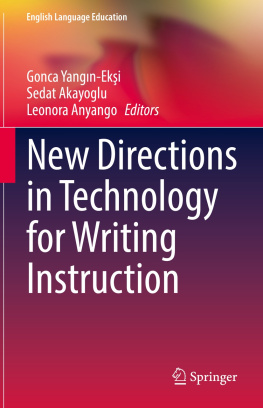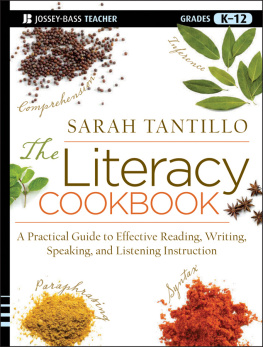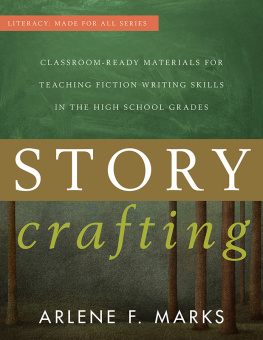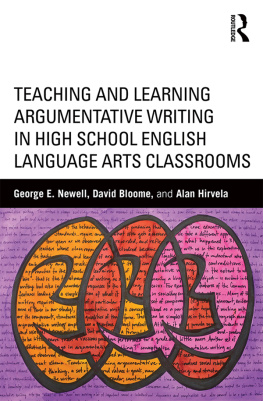| cover-0 |
| | Physical Eloquence and the Biology of Writing |
|
|
| cover-0 |
If you like this book, buy it!
| page_1 |
| | Rather than state what this book is about, I want to start with its omissions. Although I will discuss the teaching of writing at length, this is not a book that deals exclusively with written literacy. Neither do I explore in depth topics like inner language (Vygotsky), learning and acquisition (Krashen), errors (Shaughnessy), nor most other aspects of what I consider to be "mainstream" views on writing. Of course, I recognize that composition studies is an emerging discipline and, as one result, the evidence for consensus on any issue is debatable. Literacy, for instance, clearly is undergoing a change in definition as composition theorists become increasingly influenced by social constructionism; nevertheless, I have used the term literacy in a relatively conventional way rather than explore its newer, but less stable, meanings. 1 |
| This deliberately "dumb" presentation may unsettle readers who want a straightforward exposition of terms like literacy. But I have chosen a manner of presenting my ideas that crucially depends on a reader's ability to think as if writing differs from accepted norms. In this sense I have written an exploratory book, one that challenges readers to rethink their own assumptions about writing. In effect, I am asking my readers to consider writing, and writing development, as if both were primarily a physicaland hence biologicalactivity. |
| As a statement about the biology of literacy, this book describes an approach to teaching writing that stresses the neurological foundations of written English, mastered almost like a "foreign" language. As a discussion of eloquence, it starts with the axiomatic decline of contemporary print culture, of belletristic writing and the values associated with a Western literary tradition, so that I can promote a physical writing curriculum that takes into account the supremacy of popular culture and the emergent ascendancy of its spoken idiom. A lesser eloquence, more physical than metaphysical, thus is joined in this book with a radically different literacy, |
|
|
| page_1 |
If you like this book, buy it!
| page_10 |
| | second chapter, the simple dualism of learning and acquisition enables us to regard writing from the perspective of a subconsciously acquired physical activity. It may help as well to consider the standard difference between conscious learning and subconscous acquisition this way: no child develops mastery of a first language through formal instruction. Mere exposureprovided it is meaningful to the childseems to be enough. Although adults may require more than meaningful exposure in order to master a second language, we can pattern that effort on a child's success so that formal learning serves only a minor role. |
| The process of acquiring written language can begin well before a child starts school. Whether the child of three understands the printed word exit (from Sesame Street) or on (for the TV control) is less important than the awareness that surely develops equating print with meaning. This development varies, of course, by social class and by the child's personality and experience, so that some children may actually know the alphabet or even write their own names by age three while others of that age will exhibit little or no ability of this kind. |
| These differences among very young children probably have no lasting effect on the attainment of writing, but the opportunity to "catch up" deserves special notice, especially after children have begun their formal training in writing, which usually occurs by age seven or eight in the lower grades of primary school. Unlike speech, which children hear constantly and produce spontaneously, the language of print has an intermittent, almost ephemeral time and place for its development. Children practice writing a few hours each day in school; at home they may read the brand names on cereal boxes or glance through a TV guide for their favorite programs, but even the children who read books for pleasure will not engage printed language with anything like the engagement that continuously moves them to speak. |
| I will discuss the developmental differences (and similarities) between speech and prose more fully in Chapter Five; at this point I want to stress two fundamental points: compared to speech, children and adults rarely use print actively, either to write something or to read a text with care, and this developmental lag between spoken and written language underlies some of the problems that college students have when they begin freshman English. Without discussing how these problems are manifested in student writing (I'll save that discussion for Chapter Five), we can attend here to the principle cause of difficulties: inadequate exposure to written language. |
| Adequate exposure is not, I must concede, easy to define; Krashen argues that reading is the main source of acquired knowledge about writing. While I accept the importance of reading for writing, I do not stress it as a principle factor in prose acquisition, except in the limited sense |
|
|
| page_10 |
If you like this book, buy it!
| page_100 |
| | language acquisition. A five-year-old, for instance, may fully understand adult speech without actually producing more than 80 percent of the lexical forms or syntactic constructions that typify an adult's spoken language. |
| As the child becomes an adult, language remains unevenly mastered, with written forms being the least developed and inner language forms being the most developed. Speech has an intermediate position. Piaget evidently anticipates this three-part sequence in his own theory of cognitive development. As an infant begins to develop intelligence (which precedes language), rhythm structures the basic operations of thought (Piaget and Inhelder 1969, 1920). After this prelinguistic intelligence has formed (i.e., the sensory-motor stage), a child begins to use language for its inherent speed, range, and simultaneity of representations (i.e., pre- and concrete operations). The final stage is characterized by the ability to think in abstract, nonrepresentational terms (i.e., formal operations). Each stage builds on the preceding one, with formal operations being the last and usually least developed. Similarly, speech evolves from inner language, and writing evolves from speech. In this way, inner language represents our ability to understand the world; speech and prose serve to "translate" that understanding. 12 |
| Social/Rhetorical Contrasts |
| To a large extent writing removes us rhetorically from the social event, an event the reader completeshours, months, years laterwhen he or she reads the text. But we are never completely absentremoved from the textbecause the rhythm of our prose characterizes us. How we string words together; how we arrange these strings into arguments, images, facts; these linguistic products (or "footprints") convey our physical presence through (among other things) the rhythm of a text. |
|
|
Next page






